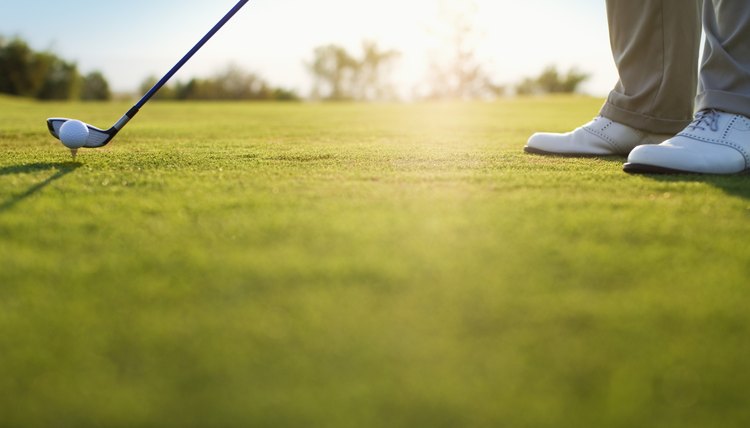More Articles
Golf Swing Speed Vs. Ball Speed

From the time golf was first played there has been a quest by golfers of all skill levels to hit the ball as far as possible. Many golf club companies build their entire marketing message around increasing distance. With over $400 million spent annually on drivers in the U.S., experts from the aerospace industry are now applying their craft in search of more distance. One major factor is the relationship between golf swing speed and ball speed and how it can impact distance.
How It Works
The golf swing speed versus ball speed comparison is an exercise in physics. The higher your swing speed, the faster the clubhead will travel. The faster you can move the clubhead through the impact zone, the higher the resulting ball speed will be. As clubhead speed increases, so will the ball speed -- all else being equal -- which should result in more distance. In many cases, "golf swing speed" and "clubhead speed" are used interchangeably.
The Scientific Results

Fuse/Fuse/Getty Images
The United States Golf Association (USGA) is golf's governing body for the U.S. The organization regularly tests the equipment being sold to the general public to make sure it conforms to the game's performance standards and does not provide an unfair advantage. According to a USGA equipment test, a golf swing speed of 125.3 mph results in a ball speed of 183.77 mph. As the swing speed decreases, so does the ball speed. A swing speed of 119.7 mph results in a ball speed of 175.56 mph. A swing speed of 110.1 mph yields a ball speed of 161.48 mph. Swing the club at 99.6 mph to produce a ball speed of 146.08 mph. Generate ball speed of 131.56 mph by swinging at 89.7 mph.
Assuming a solid strike, the speed of the ball will always be higher than the golf swing speed due to the additional mass the driver head possesses compared to the golf ball's mass.
Other Factors
While golf swing speed and ball speed can have significant impacts on how far you hit the ball, there are other factors to consider. The directional flight of the ball is determined by the angle of impact when the club meets the ball. Curving flight patterns are called "hooks," "draws," "fades" and "slices," and they can significantly affect distance. The aerodynamic characteristics determined by the dimple pattern on the ball you use affects how efficiently the ball cuts through the air.
Misconceptions
Many people believe the golf balls used by professional players you see on television are different than the balls available to the general public, resulting in higher ball speeds and greater distances for those professionals. This is false. Any ball being used by a golf professional must meet the same USGA standards as all other golf balls. There is also the misconception that once the swing speed exceeds 115 mph the golf ball speed increases exponentially. This is also called the "distance bonus." This has also been demonstrated by the USGA to be false.
Maximize Performance
Almost all golfers are in search of extra distance and increasing your swing speed can help. One of the most effective methods for increasing your swing speed is to work on your physical strength and overall flexibility. It is also a good idea to visit with a golf professional who is a trained and certified club fitter. He can work with you to be certain that your equipment matches your skill level and the many unique characteristics of your golf swing. This will result in the highest swing speed and ball speed you are capable of achieving.
References
Writer Bio
Based in Sellersburg, Ind., Dave Lobeck has been writing professionally since 1990. He manages his own barbecue website and writes a nationally syndicated column about barbecue. He was an investment broker for 10 years and launched Fuzzy Zoeller Productions in 1996. He holds a Bachelor of Science from Indiana State University, with concentrations in economics, finance and insurance.
